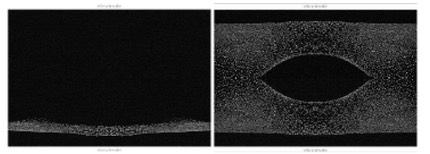Physics Objectives:
- For laboratory complex (dusty) plasmas, the gravitational force plays a significant role in determining the properties of the system.
- If gravity can be removed, the charged microparticles can fill the entire plasma volume making it possible to study the more subtle, inter-particles forces that affect a complex plasma.
- And, new phenomena - collective effects, phase transitions, self-organization - can be studied.
Experiments:
- MPRL collaborates with the Max Planck Institute for Extraterrestrial Physics (MPE, Germany) and the Institute for High Energy Density (IHED, Russia) on two microgravity projects: PK-4 (PlasmaKristall Experiment 4) and EkoPlasma.
- In 2013, Prof. Konopka began developing a new laboratory at Auburn for testing the PLASMALAB vacuum chambers.
- MPRL is also adapting the PIV technology for use with high speed imaging (>100 frames per second) in order to perform measurements on these microgravity platforms.
- In 2017, Prof. Konopka (PI), Prof. Thomas (co-PI), and Prof. Jeremiah Williams (co-PI, Wittenberg University) received funding from the NSF and NASA in support of their studies using PK-4.
Images:

Left: Ground-based dusty plasma, particles are compressed due to gravity
Right: Microgravity-based dusty plasma, particles fill the plasma volume

Above: A view of PK-4 operations at the 2017 Facility Science Team meeting in Dec., 2017.

